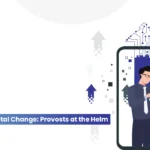
The world reacted with shock and outrage. There was a pervasive feeling of “how could this happen here?” People screamed… cried… prayed.
This was five years ago. Last spring. When a fire wreaked devastating damage to something that, for many, represented the soul of a nation. And more.
Notre Dame Cathedral is iconic and symbolic. It’s much more than a cathedral and historic building. It means a lot of things to a lot of people. The nature of that meaning may differ from person to person, but… people really care about its existence. When its very existence was threatened, this got people’s attention. Big time.
The case of Notre Dame
People in Paris fell to their knees and silently pleaded with a higher power. They sang hymns. Tears fell from their cheeks. Throughout the world, people could not tear their eyes from their screens and social media feeds as they kept vigil.
Would it be saved? Please, please let it be saved!
Then, when the flames died down, what happened?
Within less than 24 hours almost a BILLION dollars had been pledged to rebuild it.
The French government had been trying to raise money for renovation and restoration for years. International architects, historians, archivists and more had been trying to get people to pay attention to the peril this world heritage site faced. But to little avail.
Until… people watched a stained-glass window from the 13th century melt… a sky-topping spire topple… and a roof made of more than 1,000 oak trees be eaten alive.
Up until disaster hit them in the face, people couldn’t see, hear, feel, touch, taste or in any way really internalize the sense of the danger at hand.
Renovating a cathedral seemed “nice,” not urgent.
Until it almost disappeared.
Which brings me to what I consider the central existential question for all nonprofits:
What would happen if your nonprofit disappeared?
We talk a lot in fundraising circles about inspiring people to give.
Inspiration is a funny thing, however.
- Will people give more if inspired by hope (of gain) or fear (of loss)?
- Can you even call fear inspiring?
Hmmn…
It turns out both hope and fear work, but in different ways. We’ll get back to this, but let’s begin with the question of inspiration by turning to Merriam Webster:
The Inspirational History of Inspiration
Inspiration has an unusual history in that its figurative sense appears to predate its literal one. It comes from the Latin inspiratus (the past participle of inspirare, “to breathe into, inspire”) and in English has had the meaning “the drawing of air into the lungs” since the middle of the 16th century. This breathing sense is still in common use among doctors, as is expiration (“the act or process of releasing air from the lungs”). However, before inspiration was used to refer to breath it had a distinctly theological meaning in English, referring to a divine influence upon a person, from a divine entity; this sense dates back to the early 14th century. The sense of inspiration often found today (“someone or something that inspires”) is considerably newer than either of these two senses, dating from the 19th century.
I often use the terminology of “inspiring philanthropy” as a substitute for the less uplifting “fundraising.” Why? Because the former connects people to values and aspirations while the latter connects people only to money.
Also, inspiration is about feeling If you can’t make me feel in my gut… heart… soul… that what you’re doing is among the most important things that needs doing, right now, then I’m not likely to give to you.
“At the end of the day people won’t remember what you said or did, they will remember how you made them feel.”
— Maya Angelou
Is your nonprofit case for support scary enough?
I recently referenced an article penned by Mary Cahalane titled Where is your dragon? She was talking about the huge, scary, enemy your organization fights.
All good stories, and all nonprofits, need an enemy to defeat.
And not just a namby-pamby one.
“I mean something very real, very big and right there.
Because if you want a rousing battle, you need a fight worth rousing for.”
— Mary Cahalane
Mary makes an excellent point.
Because if what you’re doing and striving for doesn’t matter to me, I’m not going to support you. Sure, I might think what you’re doing sounds noble. Perhaps I’ll even give you a pat you on the back and say, “Good for you!”
But I’m guessing you want to inspire more than a high five, yes?
How to convey what’s really on the line if you were to disappear.
People often tell me the problem they address isn’t ‘scary.’
Oh, dear.
Honestly, if what you’re doing doesn’t frighten you in some way I’d wager you wouldn’t be doing it.
The trick is simply to figure out how to talk about your problem.
EXAMPLE: For four years I worked as director of development for the San Francisco Conservatory of Music. We talked with major donors about giving scholarships to aspiring musicians. We talked with smaller donors about supporting an array of free concerts. All very ‘nice.’ But not enough to inspire fire in a donor’s belly. Especially a major donor. Until we hit on what became our slogan: “Without music, life would be a mistake.” Donors were asked to imagine a world without music. Scary!
Sometimes you have a tricky situation. Your mission isn’t life-threatening or global. Everyone in the world listens to music, so this plays well to the collective imagination. But what if your mission is narrow? Or the problem you address is more evergreen than urgent?
EXAMPLE: Let’s say you run a local equine therapy program (I picked that because I’ve had three different clients that fall into this category). This isn’t a mission that will speak to everyone. But for those with whom it resonates, it can be super inspiring. Truth be told, equine therapy has been successfully integrated into treatment programs for people being treated for substance abuse, addiction, behavior, mood and eating disorders, learning differences, ADD/ADHD, autism, Asperger’s, grief/loss, trauma, sex addiction, compulsive gambling, bipolar, depression and related conditions. So… these are the scary problems you highlight first. Then, you talk about how your solution may be the only one some of your neighbors who confront these problems will be willing to accept. Without your program, identified people will suffer. For life.
Often one of the best ways to talk about your problem in a resonant way is to simply tell a story. Notre Dame on fire was a story. People had a front row watching it unfold, and many wanted a front row helping to repair the damage they’d witnessed. Give your donors a window into which they can visualize the problem you address.
Offer donors a front row seat so they can really see, and understand, the problem at hand.
What emotions inspire people to give?
Hope? Fear? I promised to get back to this.
If you want to inspire people to sing hymns on your behalf… to pray for your continued existence… to dig deep into their pockets to come up with a billion dollars (or whatever amount is needed for your inspiring project) — you need to stop and think about the emotional nature of inspiration. And how it’s tied to both fear and hope. So, let’s turn back to Merriam Webster:
Fear. Verb
1: to be afraid of: expect with alarm fear the worst
2:to have a reverential awe of fear God
Hope. Verb
1: to cherish a desire with anticipation: to want something to happen or be true.
2. to desire with expectation of obtainment or fulfillment.
3. to expect with confidence: TRUST.
Fear reminds people of the scary part of your case for support. Absolute terror about the power of the dragon. Terrors are awful, yet also fill us with awe. Fear is something marked with emotion. Hope comes in when we imagine how we might alleviate that fear. So, they’re tied together.
Use fear and hope in sequence.
Use fear first, to set forth the impending danger. The black and white problem. The issue that makes people say either “Yes I’ll help” or “No I won’t.”
Then use hope to inspire folks to join in the solution. To enthuse them to eradicate that which is terrifying. Maybe it’s impending climate crisis. Or children on the streets. Or devastating hunger. Or cancer, dementia or other debilitating disease. Maybe it’s a world without art, music or literature.
Side note: The word “enthusiasm” comes from two Greek words (‘en’ means “within you”; ‘theos’ means God). As a philanthropy facilitator, your job is to help donors find the ‘God’ within them – the power, spirit, caring, concern, compassion, hope and fear that may prompt them to make an investment in your mission.
Do it emotionally, not intellectually.
In Mary Cahalane’s article she wrote: “Help us meet our annual fund goals” is not a dragon. It’s a little plastic salamander. It might bother someone if they trip on it. But it’s no reason to drop everything and get out the checkbook.”
Well said!
I recall once asking a graduate school client “What would happen if you were to cease to exist?” The answer I got was decidedly unmoving and not the least bit scary.” They said: “It would make a homogenous profession even less diverse.”
 Okay. That’s not a primal scream raison d’être.
Okay. That’s not a primal scream raison d’être.
Sorry, it’s just not. Well-intentioned, sure. But it’s too unclear. Too broad. Too low-pressure. I don’t sense the life and death stakes. My client’s answer was something around which I couldn’t really wrap my head, let alone my heart. It could apply to so many different professions… so many different businesses… and, gee whiz, so what? The real ‘case’ for support needs to dig deeper.
I’m not suggesting you need to set your nonprofit on fire to raise money. But you do need to ignite people’s imagination. You do need to make an emotional case for support that helps people confront the problem in such a way they are moved to help you deal with it.
What’s the ‘boo-boo’ you’re trying to make all better?
Okay, it’s likely worse than a ‘boo-boo.’ But I use this word with intention.
I want you to think on a primal, emotional level where your kid or grandkid is wailing at the top of their lungs because… something is wrong.
Whether you work on a grand or small scale, you’re trying to repair something. To balance what is out of whack. To perfect what is imperfect. To wipe the tears away or prevent the tears from forming. To alleviate the pain.
Seth Godin speaks to this in Make things better:
- “Better implies that what we have right now is imperfect. Better requires change, and change is scary. Better might be in the eye of the beholder. Better is an assertion, one that requires not just the confidence to say it, but the optimism to believe that it’s possible.
- Make implies that it’s up to us. Someone needs to make it better, and it might just be you.
Everything in our built world – the water we drink, the food we eat, the place we live – if it’s good, it’s good because someone, a generation or two ago, decided to make it better. And if it’s not good, or not good enough, only our action is going to make it better.
We can see the world around us, and if we try, we can see it becoming better.
It might be a podcast or a political campaign, an engineering insight or a more inclusive policy. It probably involves finding and organizing others on a similar path. It definitely takes guts.
I’ll reiterate my belief that we each have a chance to assert. To announce our vision, to propose a change, to do the hard work to make things better.
It’s on us, right now.“
At the end of the day, most people want to create outsized impact and participate in something greater than themselves.
You just need to show them the way.
Look at what you do as an exercise – a mission really – in making things better.
Talk to the people likely to share your fears about the specific problem, and who also share the hope your unique solution can create meaningful change.
The fire in Notre-Dame has caused many, both inside and outside France, to feel not only sadness, but also a sense of participating in something greater: to reach out, in the spirit of the third man, to help rebuild this glorious building of faith and symbol of civilization.
— Letter written to the New York Times April 16, 2019
Think about what your fire could be, and how people would react to news that fire had destroyed your organization.
Would people care enough to sing a hymn of sadness, prayer and hope?
If they would, it’s your responsibility now to assure that fire doesn’t happen.
As a nonprofit leader, only YOU can prevent fires.
Things happen. They will always happen.
What you do in response matters.
It matters very much.
Want to Learn More about Making an Inspiring Major Gift Ask?
 Just grab my Anatomy of a Major Gift Ask e-guide and cheat sheet. It’s a a simple step-by-step guide, with clearly explained tips, pointers and even sample language, to help you succeed (in spades!) when making a major gift solicitation. Stop fearing rejection… make your compelling case… listen carefully… respond with empathy… and you’ll prevail!
Just grab my Anatomy of a Major Gift Ask e-guide and cheat sheet. It’s a a simple step-by-step guide, with clearly explained tips, pointers and even sample language, to help you succeed (in spades!) when making a major gift solicitation. Stop fearing rejection… make your compelling case… listen carefully… respond with empathy… and you’ll prevail!
All Clairification products come with a 30-day, no-questions-asked, 100% money-back guarantee.
Images courtesy of Dina Dee and Eric Perlin from Pixabay
#MATTER #Soul #Nation #Line










